-
 Bitcoin
Bitcoin $106,754.6083
1.33% -
 Ethereum
Ethereum $2,625.8249
3.80% -
 Tether USDt
Tether USDt $1.0001
-0.03% -
 XRP
XRP $2.1891
1.67% -
 BNB
BNB $654.5220
0.66% -
 Solana
Solana $156.9428
7.28% -
 USDC
USDC $0.9998
0.00% -
 Dogecoin
Dogecoin $0.1780
1.14% -
 TRON
TRON $0.2706
-0.16% -
 Cardano
Cardano $0.6470
2.77% -
 Hyperliquid
Hyperliquid $44.6467
10.24% -
 Sui
Sui $3.1128
3.86% -
 Bitcoin Cash
Bitcoin Cash $455.7646
3.00% -
 Chainlink
Chainlink $13.6858
4.08% -
 UNUS SED LEO
UNUS SED LEO $9.2682
0.21% -
 Avalanche
Avalanche $19.7433
3.79% -
 Stellar
Stellar $0.2616
1.64% -
 Toncoin
Toncoin $3.0222
2.19% -
 Shiba Inu
Shiba Inu $0.0...01220
1.49% -
 Hedera
Hedera $0.1580
2.75% -
 Litecoin
Litecoin $87.4964
2.29% -
 Polkadot
Polkadot $3.8958
3.05% -
 Ethena USDe
Ethena USDe $1.0000
-0.04% -
 Monero
Monero $317.2263
0.26% -
 Bitget Token
Bitget Token $4.5985
1.68% -
 Dai
Dai $0.9999
0.00% -
 Pepe
Pepe $0.0...01140
2.44% -
 Uniswap
Uniswap $7.6065
5.29% -
 Pi
Pi $0.6042
-2.00% -
 Aave
Aave $289.6343
6.02%
The Bollinger Bands open but the K-line entity shrinks, so be cautious?
When Bollinger Bands expand and K-line bodies shrink, it signals rising volatility with weakening momentum, often hinting at a potential market reversal or consolidation phase.
Jun 20, 2025 at 06:08 pm
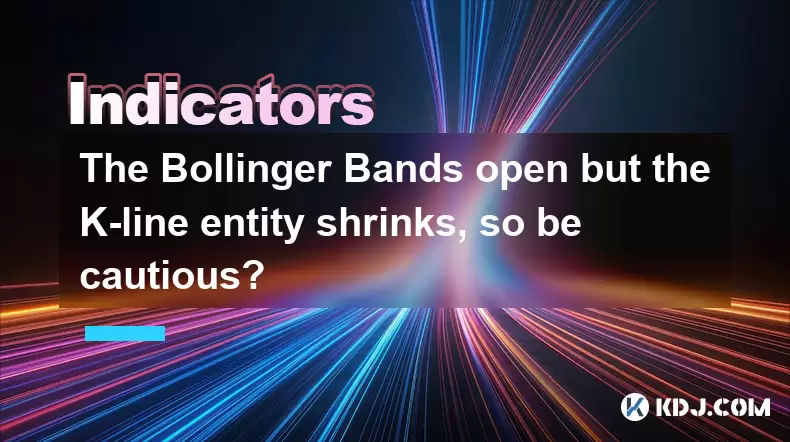
Understanding the Bollinger Bands and K-Line Relationship
Bollinger Bands are a popular technical analysis tool used in cryptocurrency trading. They consist of a moving average (usually 20-period) with two standard deviation lines plotted above and below it. These bands dynamically adjust to price volatility, expanding when volatility increases and contracting during calmer periods.
In contrast, the K-line, also known as the candlestick chart, represents price movement over specific time intervals. Each K-line contains information about the open, high, low, and close prices within that interval. The body or "entity" of the K-line reflects the difference between the opening and closing prices.
When Bollinger Bands expand while the K-line body shrinks, it signals a potential imbalance between volatility and price momentum. This divergence may suggest an upcoming reversal or consolidation phase in the market.
Key Insight: A shrinking K-line entity amid expanding Bollinger Bands often indicates weakening buying or selling pressure despite rising volatility.
Why Do Bollinger Bands Expand While K-Lines Shrink?
There are several reasons behind this phenomenon:
Increased Volatility Without Directional Movement: When traders become more active but no clear trend emerges, the bands widen due to higher price swings, yet the actual candle bodies remain small.
Market Indecision: Bulls and bears may be fighting for control, causing wide wicks on K-lines and narrow bodies, indicating uncertainty among participants.
Profit-Taking or Stop-Hunting: In crypto markets, sudden spikes followed by reversals can occur when large players manipulate price to trigger stop-losses, resulting in expanded bands and reduced K-line entities.
Important Note: This pattern is not inherently bearish or bullish—it must be interpreted in context with other indicators and the broader market structure.
How to Identify This Pattern on a Chart
To spot this signal effectively, follow these steps:
- Open your preferred trading platform and select a cryptocurrency pair such as BTC/USDT or ETH/USDT.
- Apply the Bollinger Bands indicator with default settings (20-period SMA, 2 standard deviations).
- Ensure the chart displays candlestick patterns clearly.
- Look for moments where the upper and lower bands begin to widen significantly.
- Simultaneously, observe if the K-line bodies are getting smaller—regardless of color (green or red).
- Use zoom tools to focus on recent candlesticks
- Compare current candles with previous ones to assess body size changes
- Check volume levels—rising volume during expansion supports the significance of the pattern
Tip: Combine this observation with support/resistance zones or moving averages to filter false signals.
Risks Associated With This Pattern
While this pattern can be insightful, it's not foolproof. Here are some risks to consider:
False Breakouts: Markets can mimic this setup before continuing the existing trend, especially in highly liquid assets like Bitcoin or Ethereum.
Whipsaw Movements: Sudden reversals after entering a trade based solely on this signal can lead to losses.
Lack of Confirmation: Relying only on Bollinger Bands and K-line size without additional confirmation from volume or oscillators can be misleading.
Critical Reminder: Never make trading decisions based solely on one pattern—always use multi-timeframe analysis and risk management strategies.
How to Trade Safely When This Pattern Appears
If you notice this pattern forming, here’s how to approach it cautiously:
Wait for Confirmation: Instead of acting immediately, wait for a clear breakout or breakdown confirmed by volume or other indicators like RSI or MACD.
Place Tight Stop-Loss Orders: If entering a position, ensure your stop-loss is placed just beyond the recent swing high or low to manage risk effectively.
Monitor Volume Closely: A spike in volume during or after the pattern formation adds weight to the potential move.
Consider Timeframes: Higher timeframes like 1-hour or 4-hour charts offer more reliable signals than short-term intervals like 5-minute or 15-minute charts.
- Use Fibonacci retracement levels to identify key support/resistance areas
- Combine with moving averages (e.g., 50 EMA) to confirm trend direction
- Set realistic profit targets based on historical volatility
Effective Strategy: Use the Bollinger Band squeeze as a warning sign rather than a direct entry signal.
Frequently Asked Questions
Q: Does this pattern always indicate a reversal?
A: No. It suggests indecision or a potential shift in momentum, but continuation of the trend can also occur depending on market conditions.
Q: Can I use this pattern in altcoin trading?
A: Yes, though altcoins tend to be more volatile and less predictable. Extra caution and tighter risk controls are advised.
Q: What other indicators complement this pattern well?
A: Volume indicators like OBV, oscillators like RSI or Stochastic, and volatility filters like ATR can enhance the reliability of this setup.
Q: How long should I wait for confirmation after seeing this pattern?
A: There’s no fixed timeframe, but waiting for at least one or two additional candlesticks with clear directional bias can improve accuracy.
Disclaimer:info@kdj.com
The information provided is not trading advice. kdj.com does not assume any responsibility for any investments made based on the information provided in this article. Cryptocurrencies are highly volatile and it is highly recommended that you invest with caution after thorough research!
If you believe that the content used on this website infringes your copyright, please contact us immediately (info@kdj.com) and we will delete it promptly.
- Cardano, Dogecoin, and the Altcoin Shift: What's Next?
- 2025-06-20 22:45:12
- Gold Coin, Rare, Horses: A Numismatic Roundup
- 2025-06-20 22:45:13
- Dogecoin, Shiba Inu, and the Meme Coin Mania: What's Next?
- 2025-06-20 22:25:12
- Core Scientific (CORZ): Needham's Price Target and the Bitcoin Mining Upside
- 2025-06-20 22:25:12
- DOGE to PKR: Riding the Crypto Wave in Pakistan
- 2025-06-20 22:50:12
- Wall Street, Trump, and the Middle East: A Jittery Balancing Act
- 2025-06-20 22:50:12
Related knowledge

Is the golden cross of the ROC indicator below the zero axis effective?
Jun 20,2025 at 09:42pm
Understanding the ROC Indicator and Its Role in Cryptocurrency TradingThe Rate of Change (ROC) indicator is a momentum oscillator widely used by traders to assess the speed at which cryptocurrency prices are changing. It measures the percentage difference between the current price and the price from a certain number of periods ago. The ROC helps identif...
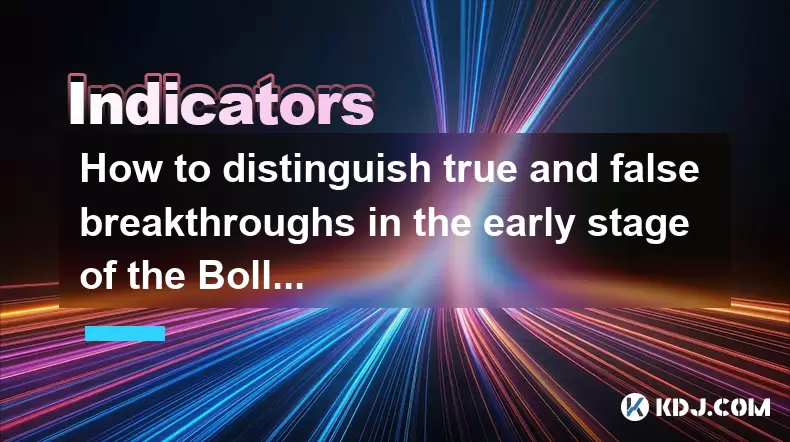
How to distinguish true and false breakthroughs in the early stage of the Bollinger Band opening?
Jun 20,2025 at 10:35pm
Understanding the Bollinger Band StructureBollinger Bands consist of three lines: a simple moving average (SMA) in the middle, and two outer bands that are standard deviations away from the SMA. These bands expand and contract based on market volatility. When the bands begin to widen, it often signals an increase in price volatility, which traders inter...
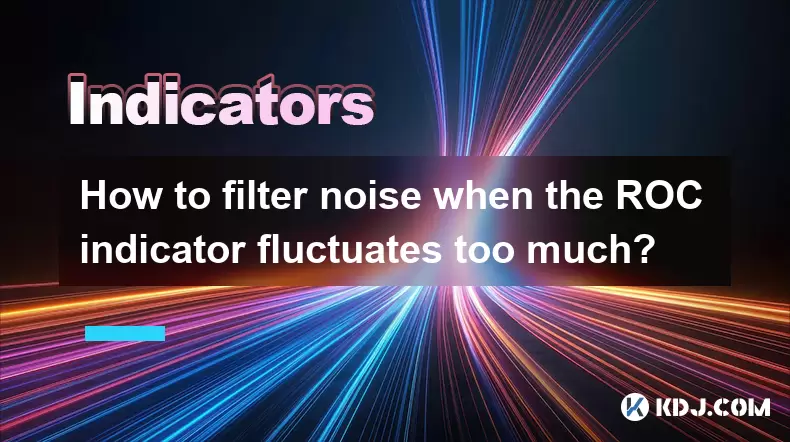
How to filter noise when the ROC indicator fluctuates too much?
Jun 20,2025 at 11:07pm
Understanding the ROC Indicator and Its SensitivityThe Rate of Change (ROC) indicator is a momentum oscillator that measures the percentage change in price between the current closing price and the closing price from a specified number of periods ago. When the ROC indicator fluctuates too much, it can create misleading signals, especially in volatile or...
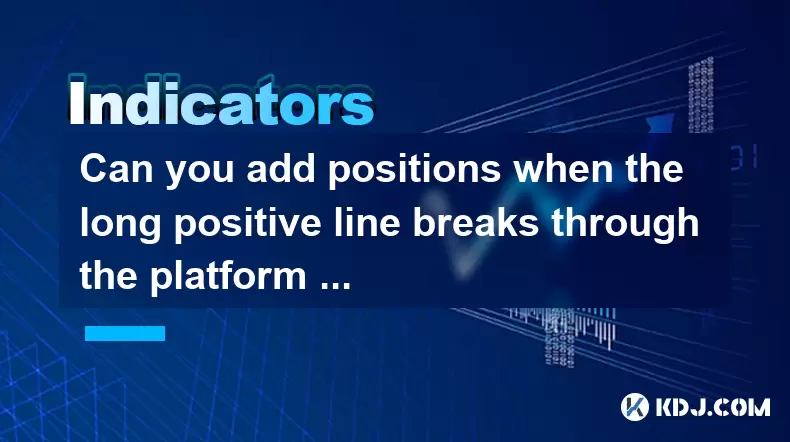
Can you add positions when the long positive line breaks through the platform and then shrinks and falls back?
Jun 20,2025 at 08:57pm
Understanding the Price Pattern: Breakthrough, Retract, and ConsolidationIn cryptocurrency trading, one of the commonly observed patterns involves a long positive line breaking through a consolidation platform, followed by a retraction or pullback. This scenario often raises questions among traders about whether to add positions after such a move. The p...
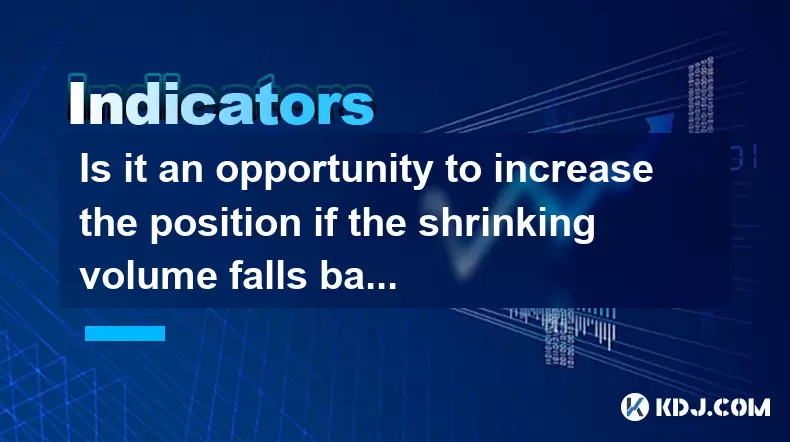
Is it an opportunity to increase the position if the shrinking volume falls back to the rising trend line?
Jun 20,2025 at 06:22pm
Understanding the Shrinking Volume in Cryptocurrency TradingIn cryptocurrency trading, volume is one of the most critical indicators used to confirm price movements and trends. When traders observe a scenario where volume shrinks during a pullback, it can signal either a lack of selling pressure or an imminent reversal. This phenomenon often occurs when...
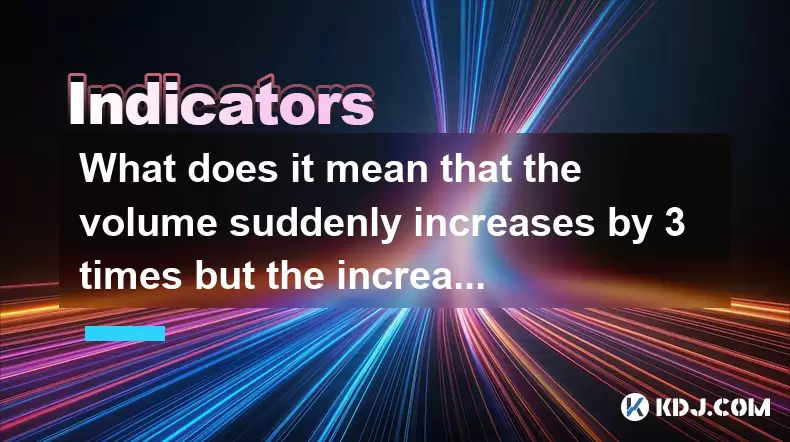
What does it mean that the volume suddenly increases by 3 times but the increase is limited?
Jun 20,2025 at 10:07pm
Understanding Sudden Volume Surges in Cryptocurrency TradingIn the world of cryptocurrency trading, sudden changes in volume are common, but when a digital asset sees its trading volume jump by three times within a short period, it raises questions. This phenomenon typically indicates increased market interest or activity surrounding the asset. However,...

Is the golden cross of the ROC indicator below the zero axis effective?
Jun 20,2025 at 09:42pm
Understanding the ROC Indicator and Its Role in Cryptocurrency TradingThe Rate of Change (ROC) indicator is a momentum oscillator widely used by traders to assess the speed at which cryptocurrency prices are changing. It measures the percentage difference between the current price and the price from a certain number of periods ago. The ROC helps identif...

How to distinguish true and false breakthroughs in the early stage of the Bollinger Band opening?
Jun 20,2025 at 10:35pm
Understanding the Bollinger Band StructureBollinger Bands consist of three lines: a simple moving average (SMA) in the middle, and two outer bands that are standard deviations away from the SMA. These bands expand and contract based on market volatility. When the bands begin to widen, it often signals an increase in price volatility, which traders inter...

How to filter noise when the ROC indicator fluctuates too much?
Jun 20,2025 at 11:07pm
Understanding the ROC Indicator and Its SensitivityThe Rate of Change (ROC) indicator is a momentum oscillator that measures the percentage change in price between the current closing price and the closing price from a specified number of periods ago. When the ROC indicator fluctuates too much, it can create misleading signals, especially in volatile or...

Can you add positions when the long positive line breaks through the platform and then shrinks and falls back?
Jun 20,2025 at 08:57pm
Understanding the Price Pattern: Breakthrough, Retract, and ConsolidationIn cryptocurrency trading, one of the commonly observed patterns involves a long positive line breaking through a consolidation platform, followed by a retraction or pullback. This scenario often raises questions among traders about whether to add positions after such a move. The p...

Is it an opportunity to increase the position if the shrinking volume falls back to the rising trend line?
Jun 20,2025 at 06:22pm
Understanding the Shrinking Volume in Cryptocurrency TradingIn cryptocurrency trading, volume is one of the most critical indicators used to confirm price movements and trends. When traders observe a scenario where volume shrinks during a pullback, it can signal either a lack of selling pressure or an imminent reversal. This phenomenon often occurs when...

What does it mean that the volume suddenly increases by 3 times but the increase is limited?
Jun 20,2025 at 10:07pm
Understanding Sudden Volume Surges in Cryptocurrency TradingIn the world of cryptocurrency trading, sudden changes in volume are common, but when a digital asset sees its trading volume jump by three times within a short period, it raises questions. This phenomenon typically indicates increased market interest or activity surrounding the asset. However,...
See all articles

























































































